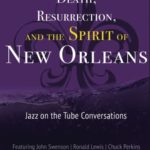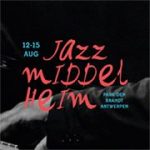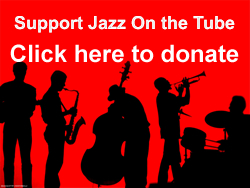The clip starts out with the recollections of two Palladium Ballroom dancers. Then we go into a short film made about the place in 1955.
Some perspective for younger people:
1. Film was still an expensive and unwieldy technology back in the 1950s so rough as this footage is, it’s great someone made this film of the place in its prime.
2. If everyone looks overly dressed up, this is how people put themselves together in those days when they went out. The jeans and t-shirt, ditch-digger-on-a-break look was still a decade away.
What was the Palladium Ballroom?
Like CBGBs for punk rock and the Birdland for bebop, the Palladium was THE place for Latin music in New York City in the 1950s.
It was a second-floor dance hall at the corner of 53rd Street and it was huge. It could fit one thousand dancing couples.
How it started
Latin orchestras shared the bill with mainstream jazz orchestras throughout New York City in the 40s and 50s, but “Latin” places were all uptown in Spanish Harlem and the Bronx.
In 1948, event promoter Federico Pagani approached the Palladium’s owners Max and Helen Hyman with an idea to bring new energy to the place which at that point was in commercial decline.
The idea was a Sunday matinee featuring Latin music exclusively. At that time, this was the first club to try this “downtown.”
From the opening night, it was a huge success with dancers, but there was an initial glitch. Max Hyman was worried about the number of black and Latino dancers who were showing up.
While New York did not have the same kind of Jim Crow laws of the south, there was an informal segregation especially downtown.
Pagani reportedly said to Hyman words to the effect: “What do you care more about black or green?”
Hyman chose the green and New York City’s (perhaps America’s) fully first integrated dance hall came into being and Latin music took over the Palladium seven days a week.
What it was like
The music was non-stop and off-the-hook starting with the orchestras of the “Big Three”: Machito, Tito Rodríguez, and Tito Puente.
Arsenio Rodríguez performed there as did Celia Cruz, Beny Moré, Pérez Prado, La Lupe, and countless others.
Mass dance classes were given to the crowds that attended.
Jazz cats loved the place and sometimes sat in with the featured bands.
A short list of those seen there: Dizzy Gillespie, George Shearing, Cal Tjader, Buddy Rich, Count Basie, Duke Ellington, Billie Holiday, Ella Fitzgerald, Gene Krupa, Dave Brubeck. Paul Desmond and Joe Morello.
Celebrities loved it too: Marlon Brando, who occasionally sat in on bongos; Sammy Davis, Jr., Frank Sinatra, Dean Martin, Peter Lawford, George Hamilton and Jerry Lewis.
The only people who didn’t like it were the top brass at the NYPD who, in their role as the scourge of black culture in NYC, harassed the place constantly.
A huge drug raid in 1961 led to the Palladium losing its liquor license, a financially crippling blow. That and cultural shifts brought in by rock and roll led the its closing in 1966.
The feature length film, The Mambo Kings, recreates the Palladium’s golden years Hollywood style.
Bronx-born Orlando Marin, a Palladium orchestra leader still performs regularly in the New York City area. If you get a chance to see him, do not miss it.
– Ken McCarthy
Jazz on the Tube
P.S. Our unique programming is made possible by help from people like you. Learn how you can contribute to our efforts here: Support Jazz on the Tube
Thanks.







 Louis Armstrong
Louis Armstrong